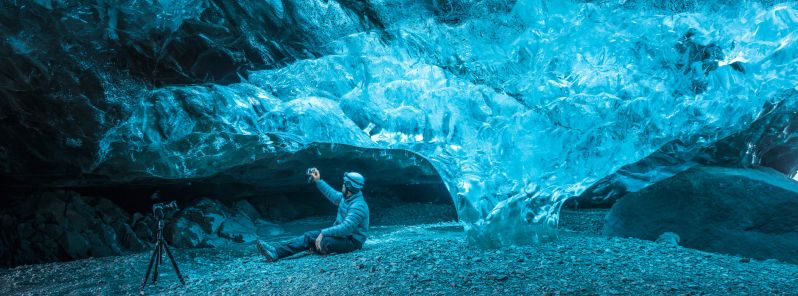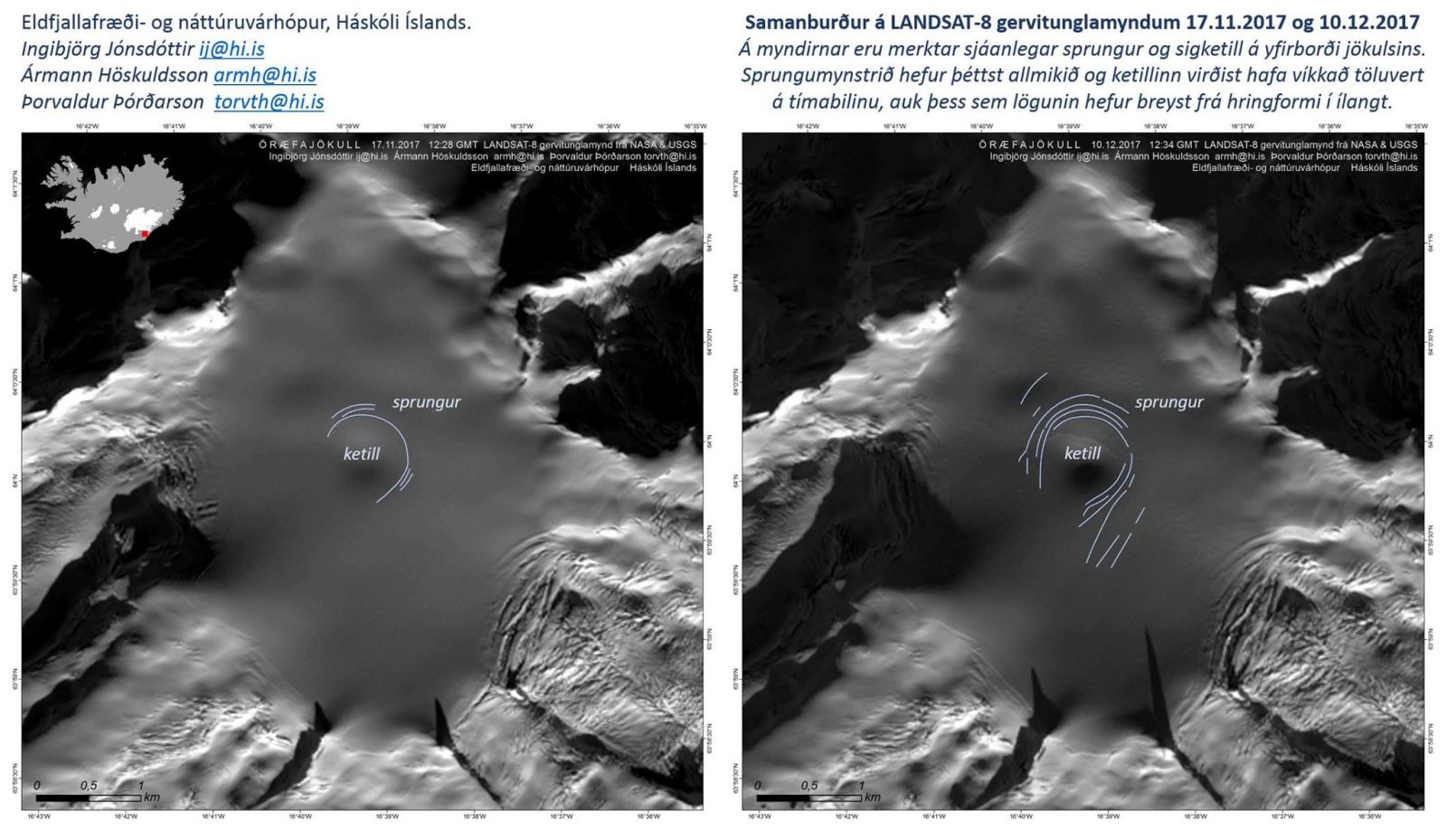Unusual smell detected in ice cave near Öræfajökull volcano, Iceland

An unusual smell was detected in an ice cave known as Kristallinn (Crystal) in Breiðamerkurjökull, Iceland on March 25, 2018. Specialists from the Iceland Met Office are now using equipment to measure for sulfur dioxide and sulfur hydroxide in the cave.
The cave is not far from Öræfajökull which has experienced seismic unrest this year but it's unclear at this time whether the two are connected.
"Whether this is connected to Öræfajökull is too early to say but we do know that there is something going on in Öræfajökull," Bjarki Kaldalón Friis of the Iceland Met Office said.
A pilot flying over Öræfajökull volcano in November 2017 noticed a new ice-cauldron within the volcano's caldera and authorities raised the aviation color code to yellow. It was later concluded that the caldera had deepened by 20 meters (65 feet) and crevasses have become larger since it was first spotted.

Image showing widening of Öræfajökull cauldron. Left image: November 17, 2017. Right image: December 10, 2017. The word 'ketill' is the cauldron, and 'sprungur' are the crevasses. Image credit: Volcanology and Natural Disasters Group of the University of Iceland
On February 9, 2018, Öræfajökull was hit by M3.6 earthquake, largest on record since instrumentation in the area started in 1976.
The last eruptive episode of this volcano started in August 1727 and ended in May 1728.
Geological summary
Öraefajökull, Iceland's highest peak, is a broad glacier-clad central volcano at the SE end of the Vatnajökull icecap. A 4 x 5 km (2.5 x 3 miles) subglacial caldera truncates the summit of the dominantly basaltic and rhyolitic volcano.
The extensive summit icecap is drained through deep glacial valleys dissecting the SW-to-SE flanks. The largest-volume volcano in Iceland, 2119-m-high (6 962 feet) Öraefajökull was mostly constructed during Pleistocene glacial and interglacial periods.
Holocene activity has been dominated by explosive summit eruptions, although flank lava effusions have also occurred. A major silicic eruption in 1362 CE was Iceland's largest historical explosive eruption.
It and another eruption during 1727-28 were accompanied by major jökulhlaups (glacier outburst floods) that caused property damage and fatalities. (GVP).
Featured image: Diana Robinson / Flickr

Commenting rules and guidelines
We value the thoughts and opinions of our readers and welcome healthy discussions on our website. In order to maintain a respectful and positive community, we ask that all commenters follow these rules:
We reserve the right to remove any comments that violate these rules. By commenting on our website, you agree to abide by these guidelines. Thank you for helping to create a positive and welcoming environment for all.